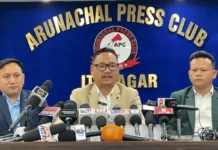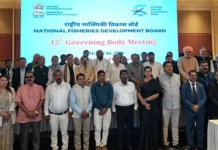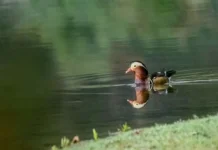Flights Of Fantasy
[ M Panging Pao ]
The only war India lost was the 1962 Sino-India war. This war was a black chapter in India’s history. Many Arunachali veterans and old-timers recall the war with fear and anger. By the end of the 31-day war, Chinese forces had penetrated about 100 kms inside Arunachal, reaching Rupa-Chaku, just 20 kms short of Assam. Chinese forces crossed Limeking along Taksing-Limeking, reached Tato along Mechuka/Manigong-Tato axis, reached Tuting along the Gelling-Tuting axis, and occupied Walong in Anjaw district.
During the war, many fierce battles were fought by both sides. About 22,000 Indian troops faced much superior Chinese troops, numbering about 80,000. As per Indian reports, India lost 1,383 soldiers, 1,047 wounded, 1,700 missing and 3,968 captured against 1,300 Chinese soldiers killed.
One of the most perplexing aspects of the 1962 Sino-India war was the non-utilisation of the Indian Air Force (IAF) for combat missions. During the war, minimal aircraft were used only for casualty evacuation and transportation of troops and weapons. Fighter aircraft with bombs, rockets and cannons were not used for offensive or defensive missions.
The Tibetan plateau had very less airfields to operate from, and these airfields were located at high altitudes, wherein lesser air density limited the operating range of fighter/bomber aircraft due to weight restrictions and limited weapon payloads. However, IAF airfields were at comparatively lesser elevations, where fighter/bomber aircraft could operate freely without major restrictions. Qualitatively and professionally also, the IAF was almost equivalent to the PLA Air Force, if not better. Fighter/bomber aircraft could be used for supporting ground troops, attacking enemy air bases, attacking ammunition/POL dumps, interdicting key bridges/lines of supply, defence of own airspace, etc. Free movement and rapid advance of enemy forces would have been difficult under frequent air attacks.
It emerges now that the outcome of the 1962 Sino-India war could have been different if the IAF had been used for close air support, interdiction behind enemy lines, and aerial combat. The then national leadership, led by Jawaharlal Nehru and Krishna Menon, committed a major blunder by not using the IAF for combat missions. History, lines of control, and country maps could have been different today if the IAF had been used.
An analysis of the ongoing Israel-Hamas war and the Russia-Ukraine war reveals that air power is a force multiplier and potential war winner. No wars can be won without the offensive/defensive combat capabilities of Air Force aircraft. The aerial assault has been bolstered by use of armed drones and unmanned combat aerial vehicles.
India and Arunachal should learn from the debacle in the 1962 Sino-India war and cannot afford similar mistakes of non-utilisation of Air Force. Being a frontline state, Arunachal is directly affected. Like in 1962, the security pundits/leadership sitting in New Delhi should not take decisions about faraway Arunachal and Ladakh in isolation. The national leadership must realise that India needs a strong and potent Air Force and drone force for future wars. (The contributor is retired Group Captain, Indian Air Force)



